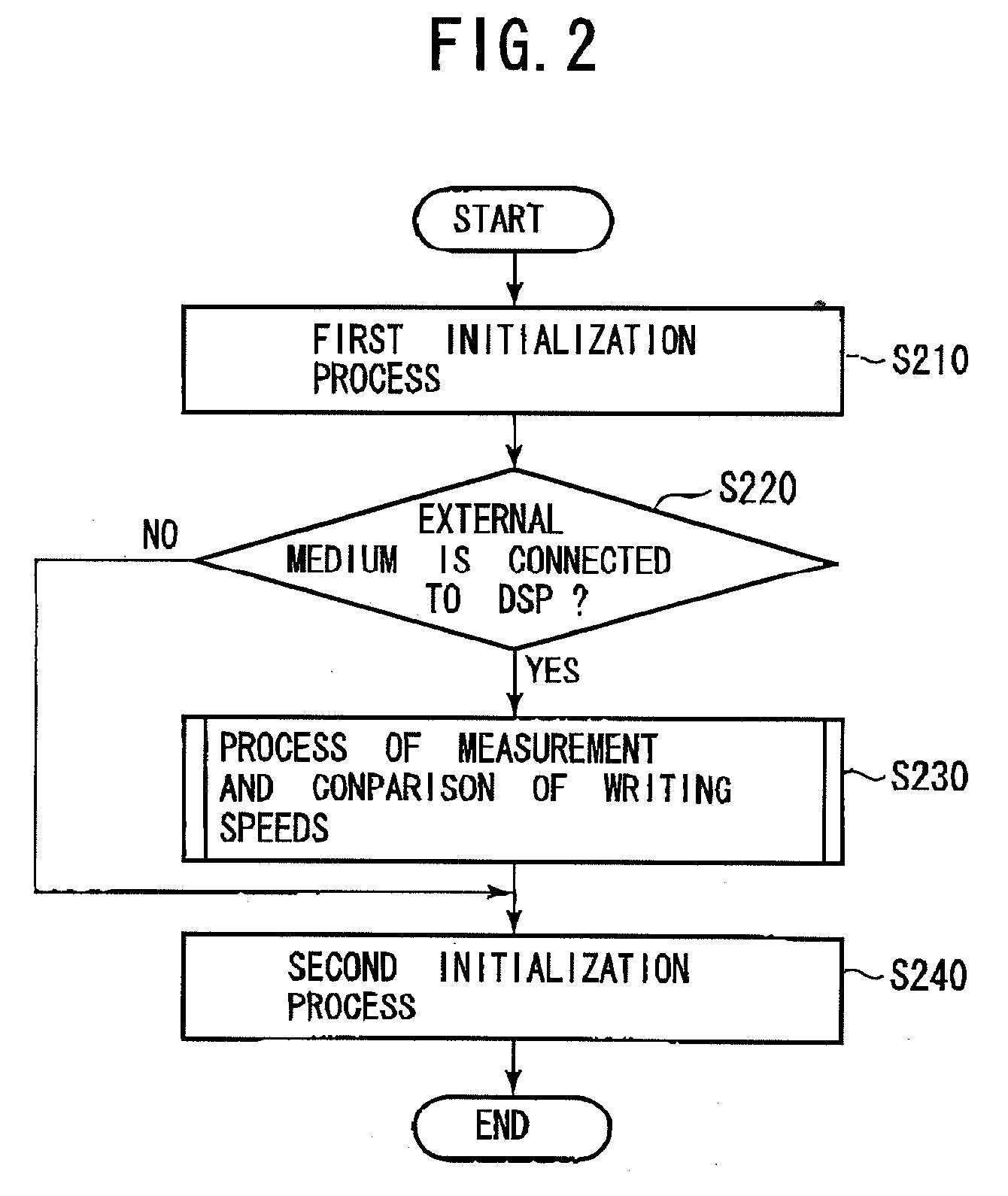Image-capturing apparatus
a technology of image data and apparatus, applied in the field of image data capture apparatus, can solve the problems of increasing writing time, seducing writing speed, and processing image data that cannot be stored, and achieve the effect of reducing the storage time of image data and increasing the maximum number of photographs able to be taken
- Summary
- Abstract
- Description
- Claims
- Application Information
AI Technical Summary
Benefits of technology
Problems solved by technology
Method used
Image
Examples
second embodiment
[0038]this invention is described below with reference to FIG. 6. FIG. 6 is a flowchart showing the process of measurement and comparison of writing speeds after image processing.
[0039]Some digital cameras have a function to edit image data. Editing image data is done when image data retrieved from the external memory medium 170 is processed by the DSP 130. The image can be resized, trimmed, or filtered herewith. The processed image data is then stored in the external memory medium 170. In many cases, the image data is divided into fragments, and each fragment is stored separately in the external memory medium 170. This causes fragmentation of the memory area. The fragmentation of the memory area decreases the writing speed into the external memory medium 170.
[0040]After the operation mode of the digital camera is changed, to the image editing mode by operating an operation switch 160 and image data is edited in step S610, it is selected whether the DSP 130 overwrites the image data...
third embodiment
[0042]the invention is described below with reference to FIG. 7. FIG. 7 is a flowchart showing the process of deleting image data stored in the memory device.
[0043]The DSP 130 can delete image data stored in a memory device. Normally, after image data stored in a memory device is cleared, the memory area which stored the image data is released. The memory area is divided into fragments toy repeating this process of clear, consequently the writing speed of the memory device is decreased. However, the process of deleting shown in FIG. 7 prevents a decrease of the writing speed. The image data is deleted by operating the operation switch 180 in step S710. In step S720, it is judged whether the switch flag is 0 or not. In the case that the switch flag is 0, the process of measurement and comparison of writing speeds is executed in step S230. The memory device which has the faster writing speed is selected herewith. In the case that the switch flag is 1 in step S720, i.e. the built-in fl...
fourth embodiment
[0045]the invention is described below with reference to FIG. 8.
[0046]Some digital cameras have a function that changes the number of pixels in an image and the image quality, for example the image quality is the compression ratio of the image.
[0047]When the number of pixels of an image or the image quality is changed, the file size of the data of the image which is photographed is changed. When the file size of the image data is changed, the amount of time required to write the image data into a memory device is changed. Therefore, it is required to select a memory device again by changing the file size of the dummy data used in the process of measurement and comparison of writing speeds. After the photographing parameters are changed in step S810, the process of measurement and comparison of writing speeds is executed in step S230. The memory device having the faster writing speed is selected herewith.
[0048]According to this embodiment, even if the file size of the image data is c...
PUM
 Login to View More
Login to View More Abstract
Description
Claims
Application Information
 Login to View More
Login to View More - R&D
- Intellectual Property
- Life Sciences
- Materials
- Tech Scout
- Unparalleled Data Quality
- Higher Quality Content
- 60% Fewer Hallucinations
Browse by: Latest US Patents, China's latest patents, Technical Efficacy Thesaurus, Application Domain, Technology Topic, Popular Technical Reports.
© 2025 PatSnap. All rights reserved.Legal|Privacy policy|Modern Slavery Act Transparency Statement|Sitemap|About US| Contact US: help@patsnap.com



